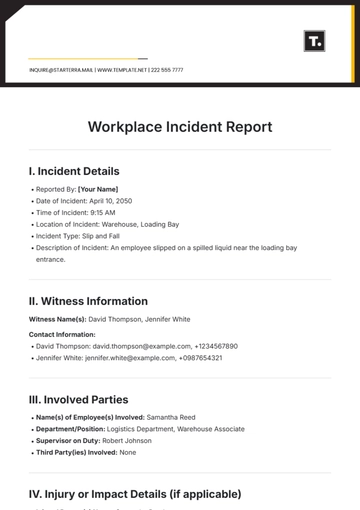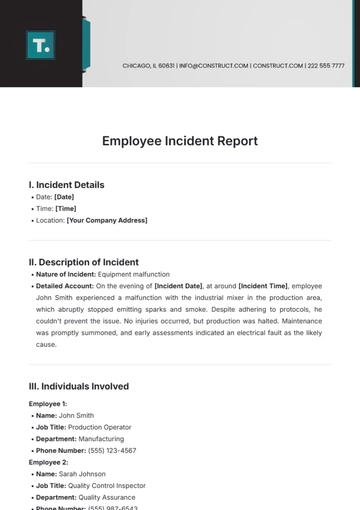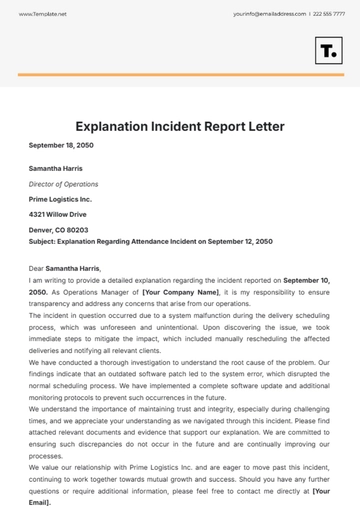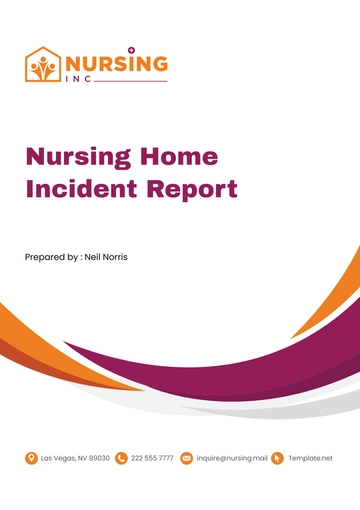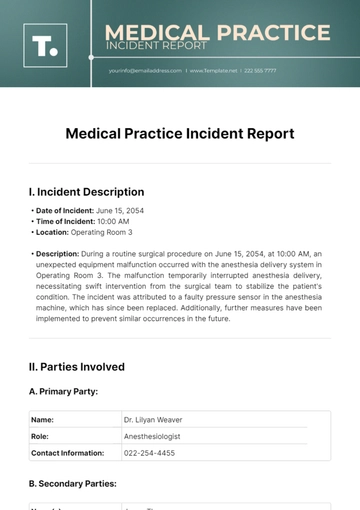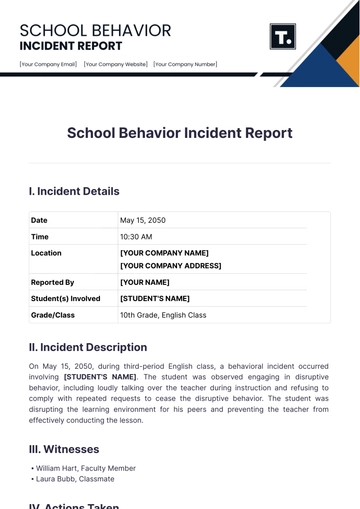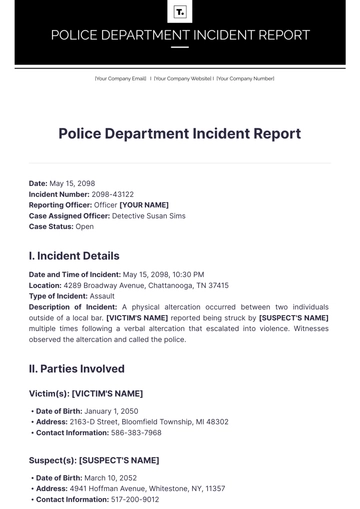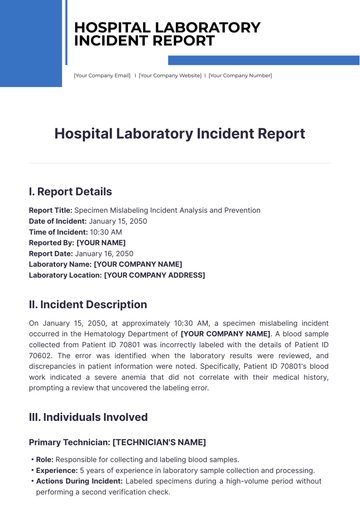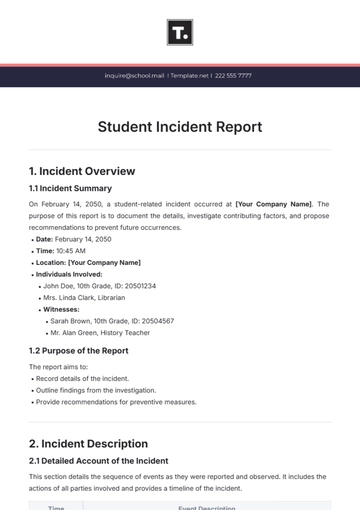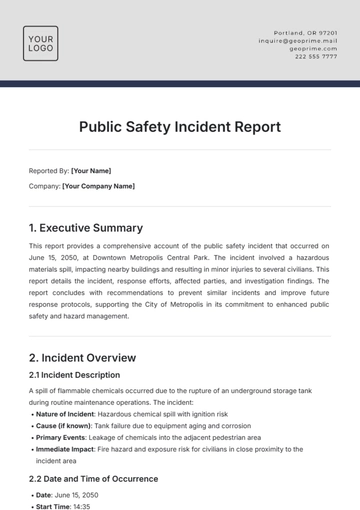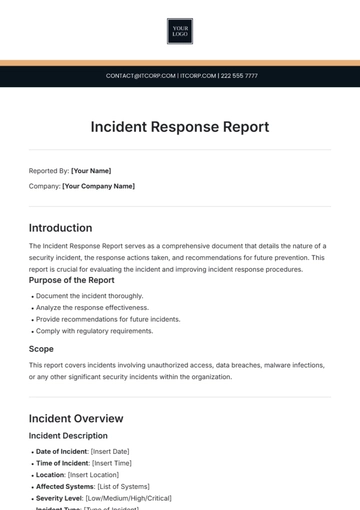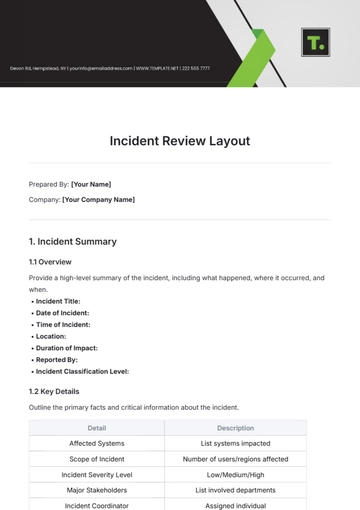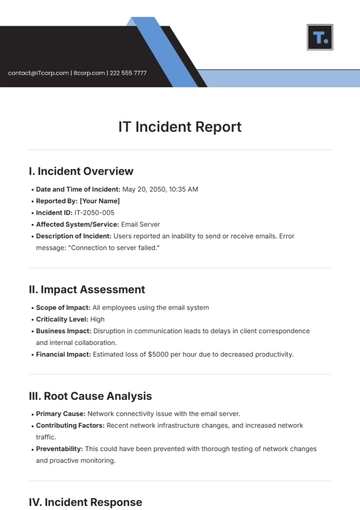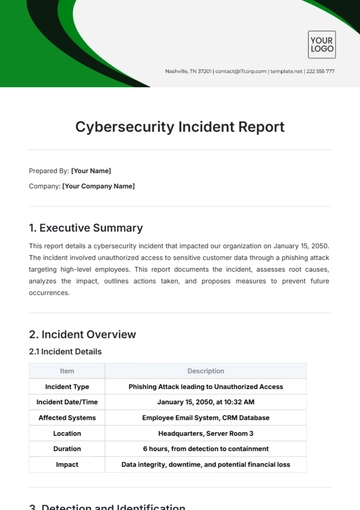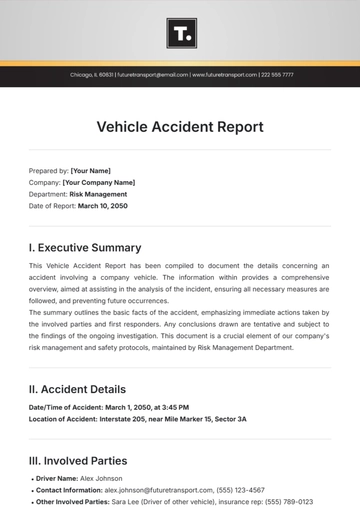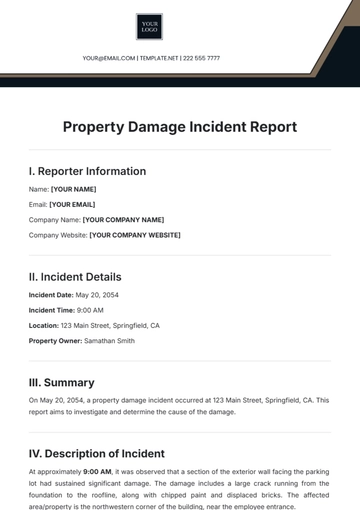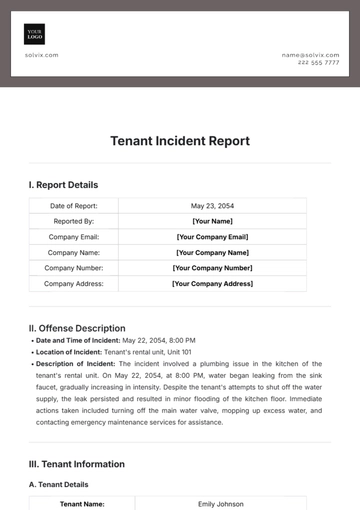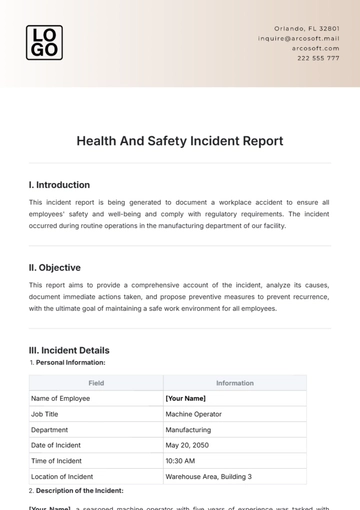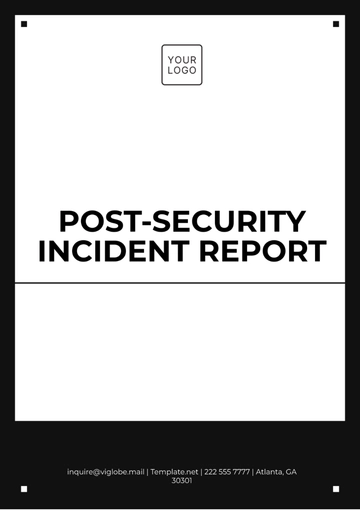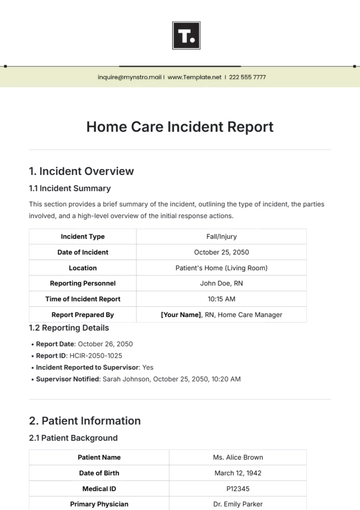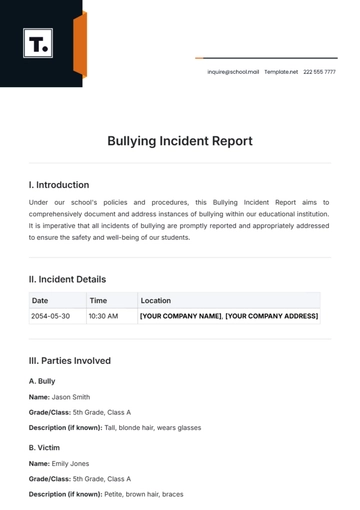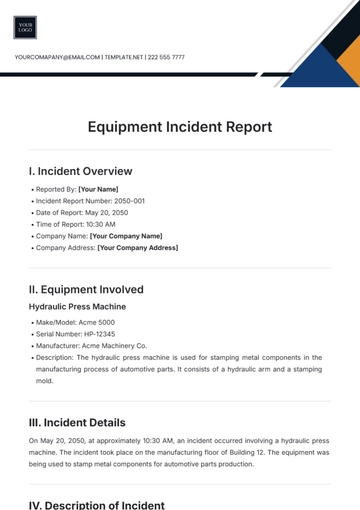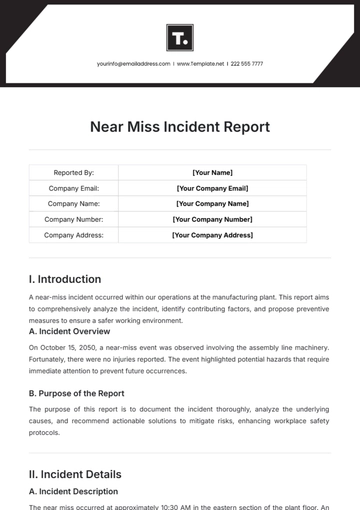Free Security Incident Report

Company: | [YOUR COMPANY NAME] | ||
Prepared by: | [YOUR NAME] | Department: | [YOUR DEPARTMENT] |
I. Introduction
The Security Incident Report provides a comprehensive overview of a security incident that has occurred within [YOUR COMPANY NAME]. The purpose of this report is to document the incident, its impact, and the actions taken in response. This report aims to ensure transparency, accountability, and continuous improvement in our security practices.
II. Incident Details
A. Incident Overview
Incident ID: [INCIDENT ID]
Date and Time of Incident: [DATE AND TIME]
Location: [LOCATION OF INCIDENT]
Description: [BRIEF DESCRIPTION OF THE INCIDENT]
B. Impact Assessment
Affected Systems: [LIST OF AFFECTED SYSTEMS]
Data Compromised: [TYPE OF DATA COMPROMISED]
Impact on Operations: [IMPACT ON BUSINESS OPERATIONS]
Severity Level: [SEVERITY LEVEL OF THE INCIDENT]
III. Methodology
The methodology section outlines the approach used to investigate and respond to the security incident. It includes:
Incident Detection: Description of how the incident was detected, whether through automated alerts, user reports, or other means.
Response Plan: Overview of the incident response plan followed, including the roles and responsibilities of team members involved.
Forensic Analysis: Details of any forensic analysis conducted to determine the root cause and extent of the incident.
Containment Measures: Description of the measures taken to contain the incident and prevent further damage or unauthorized access.
Evidence Preservation: Explanation of how evidence related to the incident was preserved to support further investigation and potential legal action.
IV. Findings
The findings section presents the results of the investigation into the security incident. It includes:
Timeline of Events: Chronological sequence of events leading up to and following the incident.
Vulnerability Assessment: Identification of any vulnerabilities or weaknesses in security controls that contributed to the incident.
Attack Vector: Analysis of the methods used by the attacker to exploit vulnerabilities and gain unauthorized access.
Extent of Damage: Assessment of the impact of the incident on systems, data, and operations.
V. Analysis
The analysis section interprets the findings of the investigation to provide insights into the causes and implications of the security incident. It includes:
Root Cause Analysis: Identification of the underlying factors that allowed the incident to occur.
Risk Assessment: Evaluation of the potential risks and consequences associated with the incident.
Lessons Learned: Analysis of the lessons learned from the incident and recommendations for improving security practices.
VI. Recommendations
Based on the analysis of the security incident, the recommendations section provides actionable recommendations for mitigating risks, strengthening security controls, and preventing similar incidents in the future. Recommendations may include:
Security Controls Enhancement: Implementing additional security measures, such as encryption, access controls, or intrusion detection systems.
Employee Training: Providing security awareness training to employees to improve their understanding of security threats and best practices.
Incident Response Plan Improvement: Updating the incident response plan to address any gaps or deficiencies identified during the incident.
VII. Conclusion
In conclusion, the Security Incident Report serves as a vital tool for understanding, responding to, and learning from security incidents within [YOUR COMPANY NAME]. By documenting the incident, analyzing its causes and implications, and providing recommendations for improvement, we aim to enhance our security posture and protect our organization from future threats.
- 100% Customizable, free editor
- Access 1 Million+ Templates, photo’s & graphics
- Download or share as a template
- Click and replace photos, graphics, text, backgrounds
- Resize, crop, AI write & more
- Access advanced editor
Introducing the Security Incident Report Template from Template.net - your essential companion for streamlined incident documentation. This editable and customizable template, seamlessly editable in our AI Editor Tool, empowers you to craft detailed reports efficiently. Elevate your incident management process with clarity and precision.
You may also like
- Sales Report
- Daily Report
- Project Report
- Business Report
- Weekly Report
- Incident Report
- Annual Report
- Report Layout
- Report Design
- Progress Report
- Marketing Report
- Company Report
- Monthly Report
- Audit Report
- Status Report
- School Report
- Reports Hr
- Management Report
- Project Status Report
- Handover Report
- Health And Safety Report
- Restaurant Report
- Construction Report
- Research Report
- Evaluation Report
- Investigation Report
- Employee Report
- Advertising Report
- Weekly Status Report
- Project Management Report
- Finance Report
- Service Report
- Technical Report
- Meeting Report
- Quarterly Report
- Inspection Report
- Medical Report
- Test Report
- Summary Report
- Inventory Report
- Valuation Report
- Operations Report
- Payroll Report
- Training Report
- Job Report
- Case Report
- Performance Report
- Board Report
- Internal Audit Report
- Student Report
- Monthly Management Report
- Small Business Report
- Accident Report
- Call Center Report
- Activity Report
- IT and Software Report
- Internship Report
- Visit Report
- Product Report
- Book Report
- Property Report
- Recruitment Report
- University Report
- Event Report
- SEO Report
- Conference Report
- Narrative Report
- Nursing Home Report
- Preschool Report
- Call Report
- Customer Report
- Employee Incident Report
- Accomplishment Report
- Social Media Report
- Work From Home Report
- Security Report
- Damage Report
- Quality Report
- Internal Report
- Nurse Report
- Real Estate Report
- Hotel Report
- Equipment Report
- Credit Report
- Field Report
- Non Profit Report
- Maintenance Report
- News Report
- Survey Report
- Executive Report
- Law Firm Report
- Advertising Agency Report
- Interior Design Report
- Travel Agency Report
- Stock Report
- Salon Report
- Bug Report
- Workplace Report
- Action Report
- Investor Report
- Cleaning Services Report
- Consulting Report
- Freelancer Report
- Site Visit Report
- Trip Report
- Classroom Observation Report
- Vehicle Report
- Final Report
- Software Report
